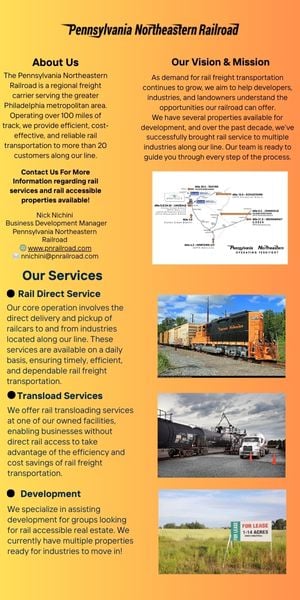The New Office is Outdoors

In Atlanta, a project connects with nature and the surrounding community.
COVID-19 did not kill the office. On the contrary, 87% of workers say they are ready to return in some capacity, according to a survey conducted by OnePoll in December 2021. However, the pandemic did change the thinking around the workday and what employees need out of their workspaces to be successful.
One development rising in Atlanta’s Westside has many features that may fit well in the post-COVID office experience. Designed many months before the pandemic, the $250 million Echo Street West development is a 19-acre mixed-use village under construction on the edge of the growing West Midtown market. Located on the Atlanta BeltLine’s Westside Connector Trail, the project intersects a fast-rising technology hub with a historically underserved black neighborhood called English Avenue. Lincoln Property Company, the developer behind Echo Street West, saw an opportunity to bet on a neighborhood that has seen years of disinvestment and create a modern, amenitized place that would appeal to tech companies and the surrounding community. According to a January 2021 article by the Atlanta Journal-Constitution, the project will be developed in phases over the next five to seven years.
Echo Street West’s design features sustainability and wellness benefits while appealing to the existing residents of English Avenue and the talent pouring into Atlanta’s Westside from Microsoft, Georgia Tech, Apple, Amazon and Atlanta’s historically black colleges and universities. The first phase, under construction now, comprises 50,000 square feet of retail, 292 multifamily units, 3.4 acres of outdoor entertainment and greenspace, and 300,000 square feet of creative spec office. It emphasizes physical and psychological wellness in the workplace through its physical structure, outdoor amenities and access to natural light.
Elevating the Office Experience
Companies still value central office space where employees can come and bounce ideas off one another and feel connected to the organization’s culture. A PwC survey conducted in January 2021 found that 87% of company leaders believe the function of the office is important for team building and collaboration. However, the look and feel of office environments is changing.
Developers are investing in projects with physical, mental and emotional wellness in mind. They’re using more sustainable materials, creating spaces for employees to relax and re-energize, building on sites near walking trails, offering access to desirable outdoor workspace and creating great places to gather and connect with their community. For example, Fast Company took a look at buildings across the country and found that new and renovated offices are being designed to include more options for workers to get away from their desks and go outside, promoting opportunities to enjoy a rejuvenating break and gather with coworkers or take their laptops outdoors and work from a secluded enclave.
Echo Street West follows the same line of thinking. The development strives to create a village-like feel with a decentralized master plan that has “no front door.” Instead of a corporate campus, the goal is to create a welcoming community with warm wooden structures and ample outdoor space that invite workers and the community into the development. To make this happen, Lincoln deployed three major design elements: timber construction, thoughtful outdoor spaces and community gathering hubs.
Benefits of Timber Construction
For the office building, Lincoln opted for an exposed five-ply cross-laminated timber (CLT) structure, with steel frame and concrete floor topping. CLT was chosen for a variety of reasons, including its health and sustainability benefits, durability and a warmer aesthetic than is often seen in office and retail environments.
CLT buildings are sustainable, which can be a key value millennials look for when deciding where they want to work. Additionally, many tenants consider sustainability to meet their environmental, social and governance (ESG) promises to their partners. WoodWorks recently commissioned a life-cycle assessment (LCA) to evaluate the opportunities for wood construction. Compared to a steel building of the same size, the wood building saves 642 metric tons of carbon dioxide, which is equivalent to 9,116 gigajoules of nonrenewable energy use.
Commercial and industrial buildings often need to be flexible as tenants’ needs change over time. Wood-framed buildings have immense durability with a lifespan of hundreds of years, which allows the building to be used for different purposes and tenants along the way.
Wood is also often associated with positive feelings, bringing a sense of comfort and peace of mind to the workplace. A study in Australia found that the vast majority of those surveyed think of wood as being natural, warm and relaxing, and it can offer workers a connection to nature inside the workplace. Additionally, satisfaction with both the working life and physical workplace increases steadily with the proportion of natural-looking wooden features.
Connections to the Outdoors
The next major design strategy Lincoln is deploying at Echo Street West is connection to outdoors and incorporating biophilia. The Natural Resources Defense Council (NRDC) defines biophilic design as utilizing natural patterns, materials and phenomena to maintain a connection to nature within the built environment. In addition to being aesthetically pleasing, biophilic design has also been found to support cognitive function, physical health and psychological well-being.
Pre-pandemic, an employee typically spent around eight to nine hours daily sitting in an office. This can take a toll on the human body, resulting in decreased metabolism rates, increased risk of depression, and pain in the neck and lower back. However, ArchDaily suggests that when architects integrate biophilic designs into modern workspaces, it increases productivity and creativity and decreases employee absence. Thus, the more the office doesn’t look or feel like an old-school office, the better.
In addition to incorporating wood, Lincoln is turning the office workspace into a front door to nature. First, the design leans into the existing scale of the neighborhood. It’s a historically low-scale area, so the heights of the buildings are lower, and the underground parking garages help keep heights in check. The floorplans are open, letting in abundant natural light. Echo Street West will be the first exterior core office building in Atlanta, meaning tenants can get to their spaces via outdoor elevators and staircases with open-air corridors and meeting areas. Every vertical means of moving through the building provides light, air and places to hang out — from the landings of exterior stairs to large covered porches with ceiling fans for tenants.
There are biophilic elements throughout the entire community, including large windows to take in the surrounding treetops and walkable trails, wood interiors and decisions to not overpave the landscape to preserve the feel of working among nature. When the desire to work outside kicks in, there are outdoor enclaves suitable for conference rooms, secluded and shaded woodland areas for meetings, fire pits for the colder months and covered porches with ceiling fans during the warmer months.
Importantly, the outdoor workspaces are Wi-Fi enabled, with electrical outlets available to charge devices and stay connected.
Community Gathering Hubs
Lastly, Lincoln has made a strong investment in community gathering hubs that invite English Avenue residents, surrounding communities and office workers to come together. Employees want to live and work in areas that embody “a sense of place” and offer access to dining, entertainment, retail and lifestyle amenities. Echo Street West will strive to do this with two unique social spots — a luxury residential-style clubhouse for office workers and Westside Motor Lounge, an expansive entertainment space for the community.
The amenitized freestanding clubhouse anchors a greenspace called the Plaza, located in the center of the property. Equipped with indoor/outdoor garage doors, the clubhouse replaces the traditional office lobby and provides a unique place for office workers to socialize, grab some fresh air and convene for meetings outside of their normal office space and conference rooms.
Lincoln also recognized an opportunity to restore three vacant automotive repair shops and transform them into Westside Motor Lounge, a large indoor/outdoor bar and restaurant with a variety of seating, lounging and interactive spaces. The entertainment-driven concept is organized around an expansive courtyard with shuffleboard, yard games, and a stage and screen for small concerts and events. Being only a mile down the new BeltLine trail from the Mercedes Benz Stadium, Westside Motor Lounge could serve as a location for tailgating before games and concerts, a spot to take a break from a hike on the BeltLine trail, and an opportunity for coworkers, friends or families to hang out and enjoy the space for hours.
Communal spaces like these are especially important in office environments as they create a compelling reason for workers to leave their homes. Organic conversations and impromptu brainstorms rarely happen in isolation. Echo Street West was branded a “village of ideas” before the pandemic hit, and the concept has only grown in importance as companies rethink the future of work and what they’ll need from their office space to be successful.
Michael Howell is a senior vice president for office with Lincoln Property Company.




